


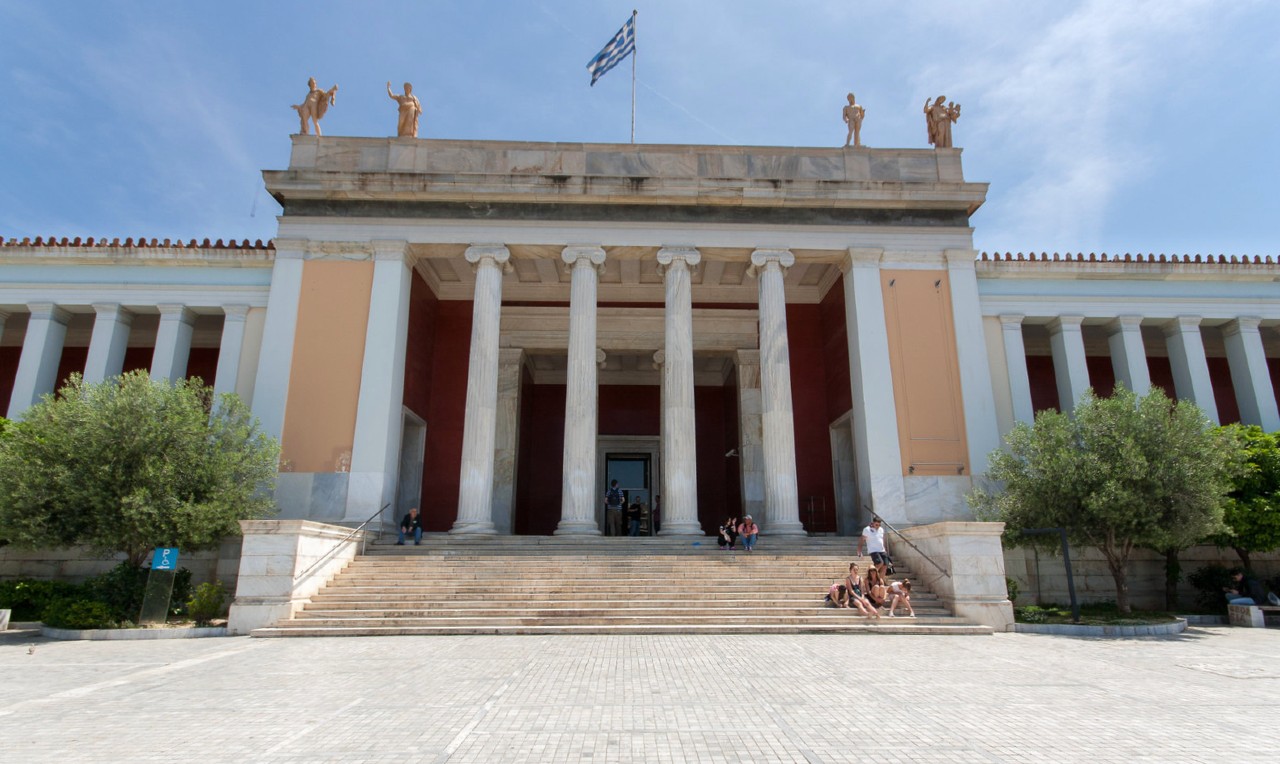
We Need Your Support!
We want to remind you that Athens by Locals is reader-supported. By booking tours, hotels, tickets, and other travel services through the links on our website, you can help us continue providing valuable content and information. Note that we receive a small commission only if you make a booking using our links at the time of your visit. So, if you're not quite ready to book yet, you can save this post and the links and return to make your booking when the time is right. We genuinely appreciate your support and are thrilled to have you in our travel community. Please don't hesitate to reach out if you have any questions or need assistance. Happy travels!
Travelers who visit Athens are left astonished by the wealth of archeological wonders the city holds. There is no better place to experience the culture and history of Greece than the National Archaeological Museum of Athens, the largest museum in the country and one of the most important archaeological museums worldwide.
In this article, we’ll go over everything you need to know about the famous museum, including useful information like the opening times and entrance fees, as well as its history and the most significant exhibits and collections.
Read on and get ready to dive into the city’s culture.
The National Archaeological Museum was originally planned as a treasury that would hold all the important archaeological finds of the 19th century from in and around Athens.
Its collections, however, were growing so rapidly that it was gradually turned into a central archaeological museum that contained the most important artifacts found all over the country.
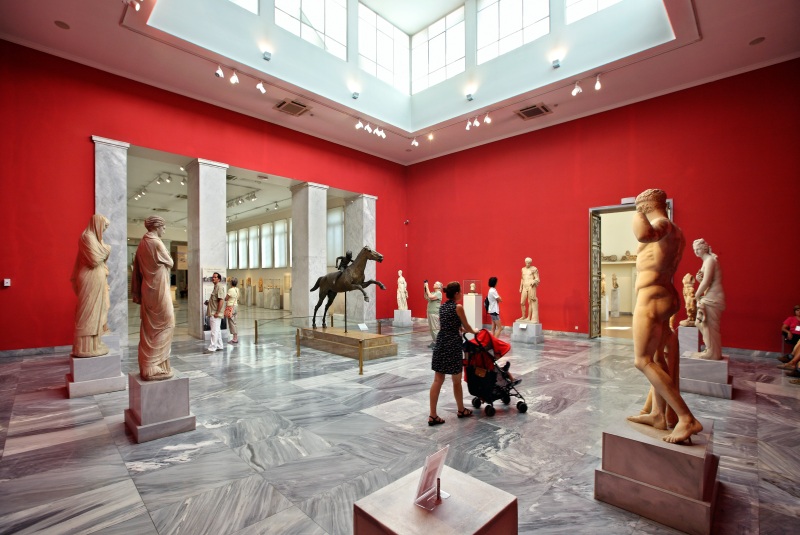
The museum is housed in a stunning neoclassical building of the 19th century designed by L. Lange and remodeled by Ernst Ziller (the mastermind architect responsible for creating the famous Athenian Trilogy) that is a real gem in the heart of Athens.
Today, the National Archaeological Museum is home to more than 11,000 exhibits from all eras and places, split into dozens of halls and collections that narrate Greece’s turbulent past from the Prehistoric era to Late Antiquity.
Apart from the major permanent collections that we will break down below, the museum also features numerous temporary collections, a massive library with more than 20,000 items, including rare ancient manuscripts, philosophy and science volumes, a vast photography archive, and several conservation laboratories that double as research centers for international scholars.
Book on line your ticket to the National Museum now
Founded in 1829, the National Archaeological Museum was the country’s first museum after the Greek Revolution of 1821.
It was relocated to Athens from Aegina (the former capital of Greece) in 1834 and opened its doors to the public in 1889 a few years after Lange and Ziller’s vision of the building that would house it became a reality.
During the Second World War, the museum exhibits were boxed and buried in the building’s basement and other locations to preserve the treasures of antiquity.
It reopened in 1947 but re-introducing all the exhibits to its halls took a little less than 20 years.
It was renovated once again later on, in 2002, after suffering damages in the 1999 earthquake that hit Athens, and it has been welcoming thousands of visitors every year ever since.
With exhibition halls spanning over 8,000 m², tens of different halls, and thousands of exhibits, walking through the National Archaeological Museum can be overwhelming for first-time visitors.
However, the museum’s directors have incredibly divided all the exhibits into six major collections. These are:
Includes all kinds of finds from the Aegean region and the most significant civilizations that flourished in the area from the sixth to the second millennium BC – the Neolithic, the Cycladic, and the Mycenaean. It also features archaeological treasures from the prehistoric settlement of Thera.
This is the largest and most magnificent collection of sculptures in the country including works of art from the 7th to the 5th century BC.
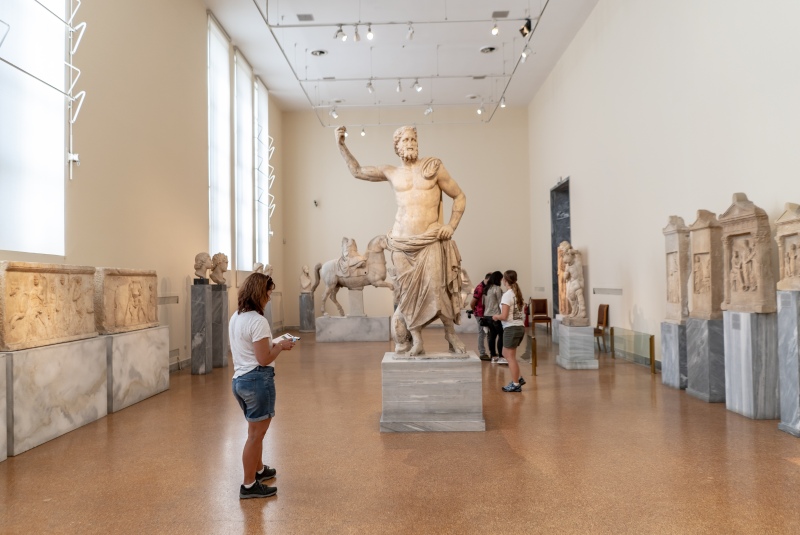
It encompasses the most important and representative artifacts and ceramics of ancient Greek pottery from the 11th century BC up to the Roman period. It also features the Stathatos Collection which includes items from every period of ancient Greece.
Book your ticket to the National Museum now
It features metal artifacts and bronze masterpieces like figurines, statues, vases, and weapons from the Geometric to the Roman Period. It also includes the world-famous Antikythera mechanism.
The only collection of its kind in Greece, it features rare Egyptian and near-eastern archaeological finds from 5000 BC (the pre-Dynastic period) to the Roman conquest.
Formed from the 19th century and onwards, this collection features more than 800 works that narrate the history of Cyprus from the Early Bronze Age to the Roman Period.
To make your visit to the National Archaeological Museum a little easier, we present you with a complete list of all the permanent exhibitions you can see at the National Archaeological Museum, split into two floors.

Please remember that these are not all of the exhibitions you’ll find at the museum which regularly hosts all kinds of fascinating temporary exhibitions.
Ground Floor
1st Floor
Still confused? You can always download a blueprint map of the National Archaeological Museum for free! Find it here.
Book on line your tickets to the National Museum now
Learning that the National Archaeological Museum is home to so many exhibits and fascinating artifacts, it’s only natural to be a little worried about having enough time to review them.
In fact, it’s not uncommon for travelers to visit the museum multiple times to enjoy all the exhibits.
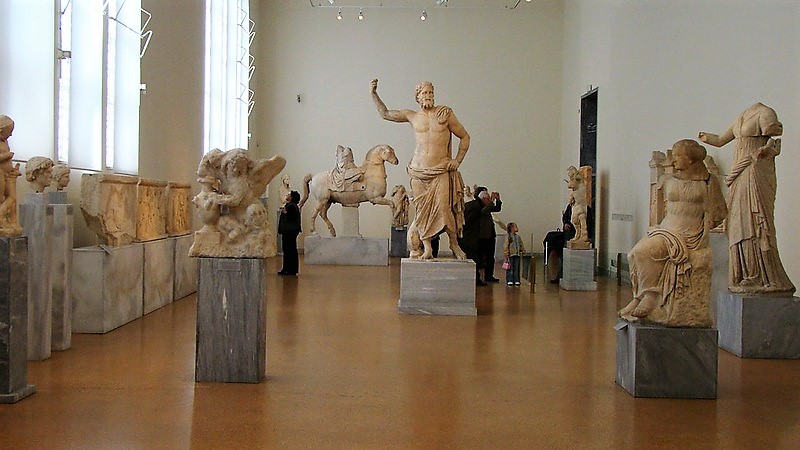
If you can’t afford to spend a whole day or even a few hours here, there are a few things that you definitely should not miss. Find out which is below.
One of the most important centerpieces of the museum, this magnificent real-size bronze statue depicting a racehorse dates back to 140 BC. Notice the sign of Goddess Nike on the horse’s right thigh.
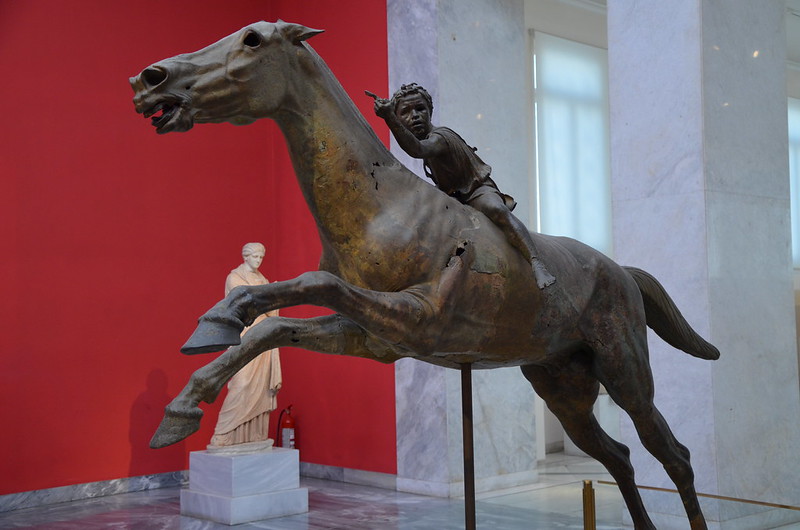
This is probably the museum’s most popular exhibit, a puzzling mechanical device, the exact use of which remains unknown. It was discovered in 1901 after spending thousands of years in the bottom of the sea.
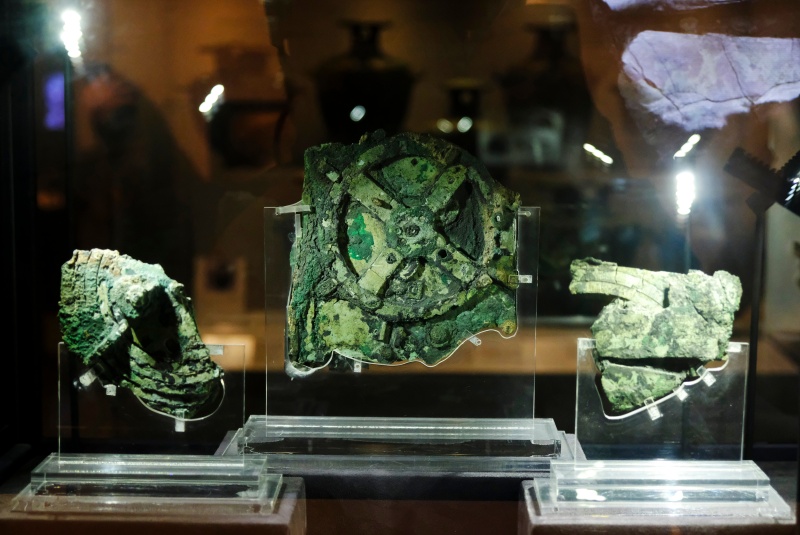
It’s still unclear which Olympian God contributed to this magnificent bronze statue from 460 BC. It’s one of the few remaining works of art from that time and one of the museum’s most talked-about exhibits.
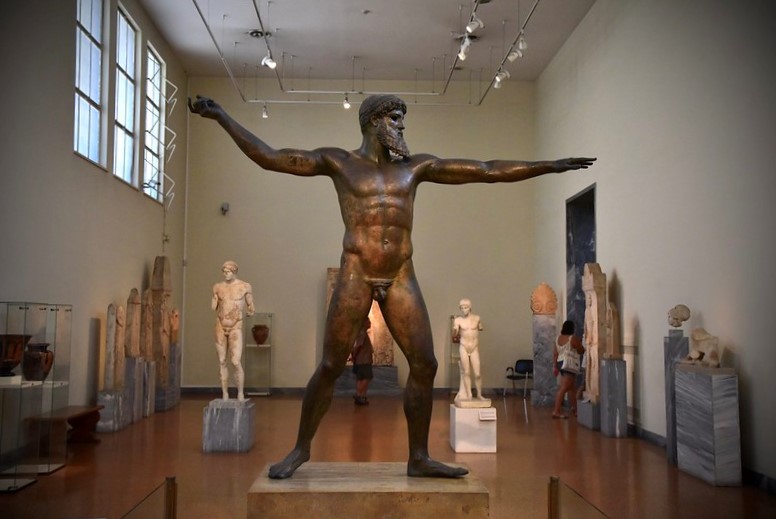
Literally translating to “young male” and “young female”, Kouros and Kore were sculpted circa 550 BC on the island of Paros. Both are considered to be two of the most complete examples of Archaic art surviving to this day.
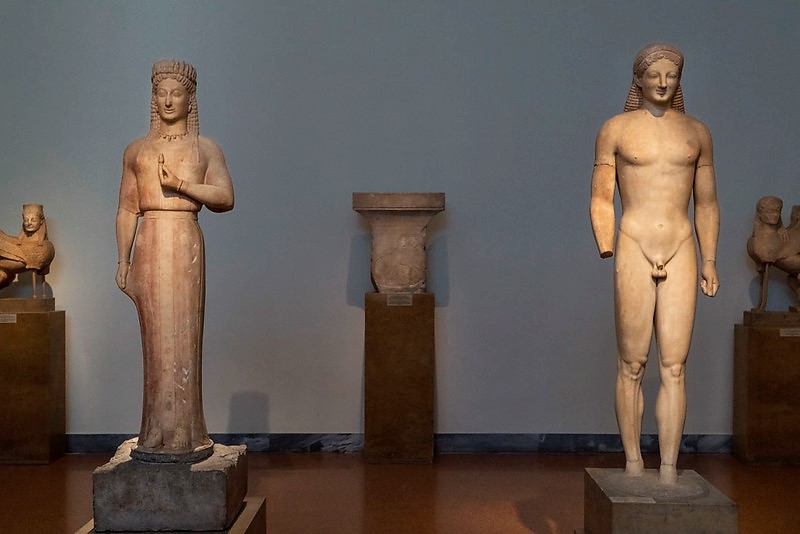
Dating back to the 16th century BC, Agamemnon’s golden death mask is perhaps the most representative artifact of the Bronze Age of Greece.
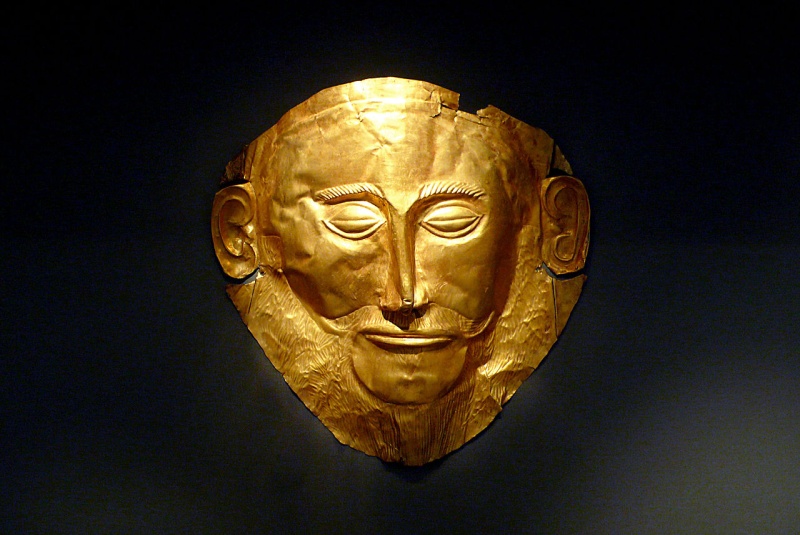
An excavation of the ancient necropolis of Kerameikos that took place in 1891 revealed two sarcophagi in excellent condition. Inside were two skeletons as well as 9 beautiful ancient vases that were most likely part of the burial ritual of the time.
It is believed that this spectacular clay vase that features Goddess Aphrodite was created to be given away as a wedding gift to a young woman around 420 BC.
Book your ticket to the National Museum now
Some of you may find that browsing through that many exhibits and taking in so much information about the history of Greece can be exhausting.
Luckily for you, the National Archaeological Museum is home to a charming outdoor café where you can relax and catch a breath.
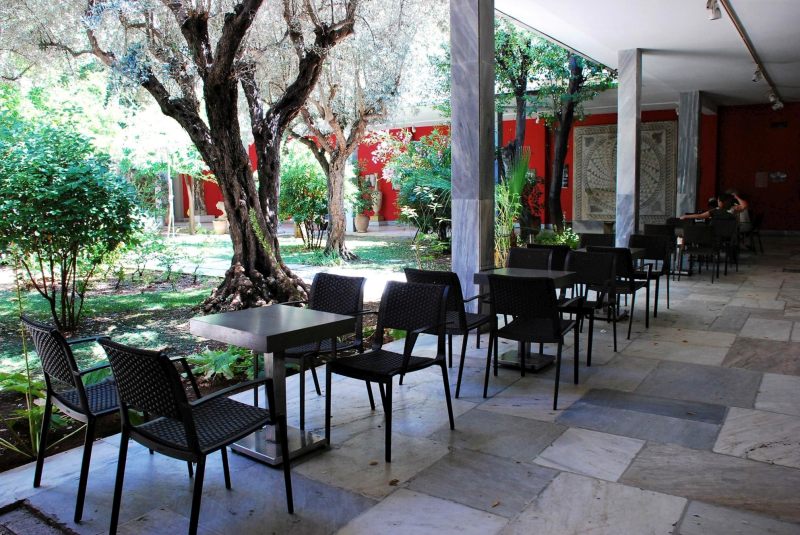
But this café is much more than a resting place. It’s an artistic venue that features the works of both local and international artists hosts musical performances and has a magnificent garden decorated with over 700 different kinds of plants.
Local’s tip: The entrance to the café is free and you can enter even if you don’t have a ticket for the museum.
This is far from the only museum café in the city that is worth your attention. Discover some spectacular museum cafés and restaurants right below.
The museum provides access to people with disabilities via a side door with a ramp located on Vasileos Herakleiou street.
Inside the museum is a spacious lift granting access to the first floor and the basement.
In the basement, you’ll find a WC designated for disabled individuals.
People with partial or total loss of vision can request a special list of 20 exhibits that can be accessed with the help of the staff. You can find the list here.
Additionally, the museum organizes several educational tours and workshops for people with impaired vision, deafness, or special needs, which expert archaeologists carry out.
The availability of these activities depends on the demand.
November 1st – March 31st:
April 1st – October 31st:
The Museum is closed on:
12€ (From April 1st until October 31st)
6€ (From November 1st until March 31st)
Click here and book your ticket to the National Archaeology Museum
Dates with Free Admission:
The Museum is also free for EU citizens who are up to 25 years old and children from non-EU countries who are up to 5 years old.
The National Archaeological Museum is located in the heart of Athens, on Patission Avenue. Getting there is quite easy no matter where you are in downtown Athens. Here are your options:
Get off at Omonoia Station (red and green line) or Viktoria Station (red line). The museum is located just a few minutes away from either.
You can use these bus lines: Β5, Α6, Β6, Ε6, Α7, Β7, Ε7, Α8, Β8, Α12, Β12, Γ12, Ε12, 022, 035, 046, 060, 200, 224, 605, 608, 622. In most of the bus lines, you’ll notice a stop called “National Archaeological Museum”. If that is not the case, consult the driver for the nearest stop.
You can get quite close to the museum with a trolley by using one of these lines: 2, 3, 4, 5, 6, 7, 8, 9, 11, 13, 14.
All in all, among the other museums in the Greek capital, the National Archaeological Museum of Athens is an experience you can’t miss, even if you are not a history buff.
Its exhibits will give you so much insight into what life in ancient Greece was like that you are guaranteed to see the city in a new light after your visit and appreciate the rest of your trip to Athens even more.
*Featured image: piet theisohn / flickr.com
A Quick Reminder:
Remember that Athens By Locals is here to guide you with planning the perfect trip to Athens and help you every step along the way. If you didn’t found what you’re looking for, or need any recommendations about your trip to Athens, feel free to contact us and we will do our best to help you. Please be as more detailed as possible regarding your subject so as to help you better.
If you like what you read please scroll down at the end of this page and subscribe to Athens By Locals so next time to receive more articles like this straight forward to your email. Join us on Facebook for comments, photos, and other fun stuff. If you enjoy this article please share it with your friends on Facebook.
Copyright © 2024 Athens By Locals © All rights reserved. No part of this site may be reproduced without our written permission.
Images owned by Athens By Locals. Image Banks or Companies promoted.